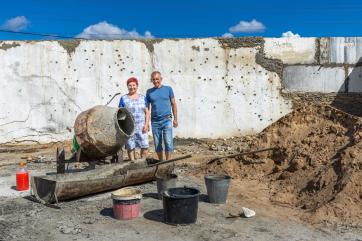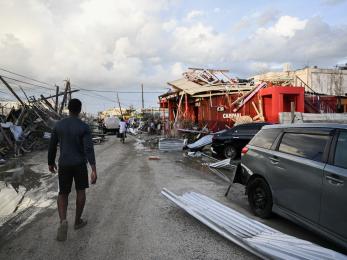After a year of uncertainty, what’s next is up to all of us
For communities across the world, 2025 has been a year like no other. Ongoing conflict has displaced millions and driven extreme hunger. Climate change continues to threaten communities’ access to nutritious food and clean water. And amidst these escalating crises, the sudden shuttering of foreign aid programmes put struggling families in even greater peril.
But another storey is starting to emerge: In the face of immense challenges, committed individuals and courageous communities have found ways to meet the moment. It’s a reminder that when we take action together, lives are saved, and progress remains possible.
With support from our teams, our partners, and committed humanitarians like you—these impact highlights from the last year show how communities have the power to recover, rebuild, and reshape our world for the better.
Looking forward, what’s next is up to all of us. Together, we can create a new beginning
In Gaza: Delivering a lifeline to displaced families
Since the conflict began in Gaza, Mercy Corps and other aid groups have faced significant barriers to delivering support to communities, yet we didn’t stop looking for solutions. We partnered with a local organisation, Palestine Environmental Friends, to distribute clean water to encampments of people forced from their homes by violence.
Over the last two years, our team in Gaza—enduring the same hunger, devastation, and loss as their neighbors—has managed to reach over 385,000 people with emergency items—food baskets, hygiene kits, and shelter supplies—and more than 33,300 people with emergency cash assistance.
In the Caribbean: Preparing communities and responding in the aftermath
In the wake of Hurricane Melissa, our team and partners are rapidly responding to community needs, delivering clean water, cash assistance, emergency and shelter kits in Jamaica and across the Caribbean to support the recovery ahead. But our work to build climate resilience and prepare for extreme weather in the region began long before landfall. We continue to bring relief to families and communities while pushing for access to scale up our efforts.
Mercy Corps has invested in local preparedness because we know that when communities lead, both response and recovery happen faster and more equitably.
Hugh Aprile, Regional Director for Latin America and the Caribbean
Through our Caribbean Resilience Initiative, Mercy Corps has supported community-led preparedness and response. By establishing Resilience Hubs equipped with solar power, potable water, internet connectivity, and emergency supplies, we support a swift response within communities during and after storms like Hurricane Melissa.
In Ukraine: Rebuilding futures with sustained support
From the start of the full-scale war in Ukraine, Mercy Corps has worked with local partners to provide aid to families trapped in or fleeing active conflict zones. Working with organisations who know their communities best ensures that our support is shaped around the real needs of people most affected by the conflict.


Since February 2022, Mercy Corps has supported more than 1 million war-affected people in Ukraine and neighbouring countries. By delivering cash and emergency assistance like household, food, and hygiene kits for families as well as grants for small businesses and farming enterprises, our team is helping communities emerge from crisis and forge a durable path forward.
In Kenya: Growing climate resilience with innovative tech
Through our partnership with Cisco, Mercy Corps enabled communities in northern Kenya to improve natural resources management with digital tools. Real-time weather warnings, geographic analysis, and satellite imagery work together to help communities protect their livestock, land, and livelihoods from climate challenges.
Not only is integrating community knowledge with scientific data critical to creating a more sustainable future for farming communities in Kenya, but it’s an approach that can be scaled and adapted to help communities around the world to withstand extreme weather.
What’s next: Uniting to help communities persist
While Mercy Corps’ programming has made a meaningful impact on the lives of millions of people this past year, significant funding cuts have stopped us from delivering lifesaving and life-changing assistance to those facing peril and crisis every day. This year will end, but the challenges that have emerged will only worsen if left unchecked.
That’s why it’s imperative for every one of us to come together around the future we still believe in—one where civilians affected by war have access to lifesaving resources, local partnerships power lasting progress, and smart solutions are scaled to spark profound impact across the world we share. What happens next truly is up to all of us.


